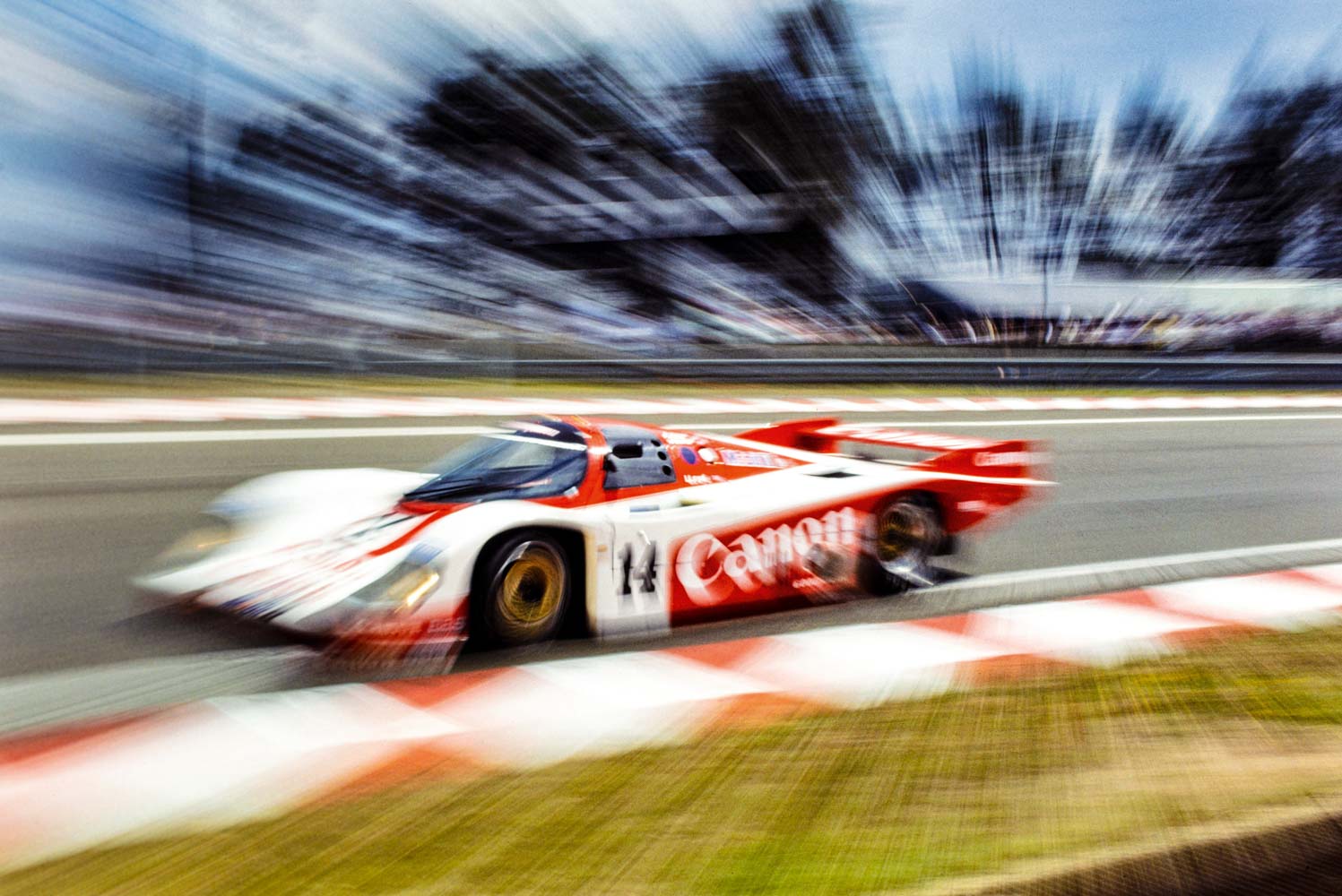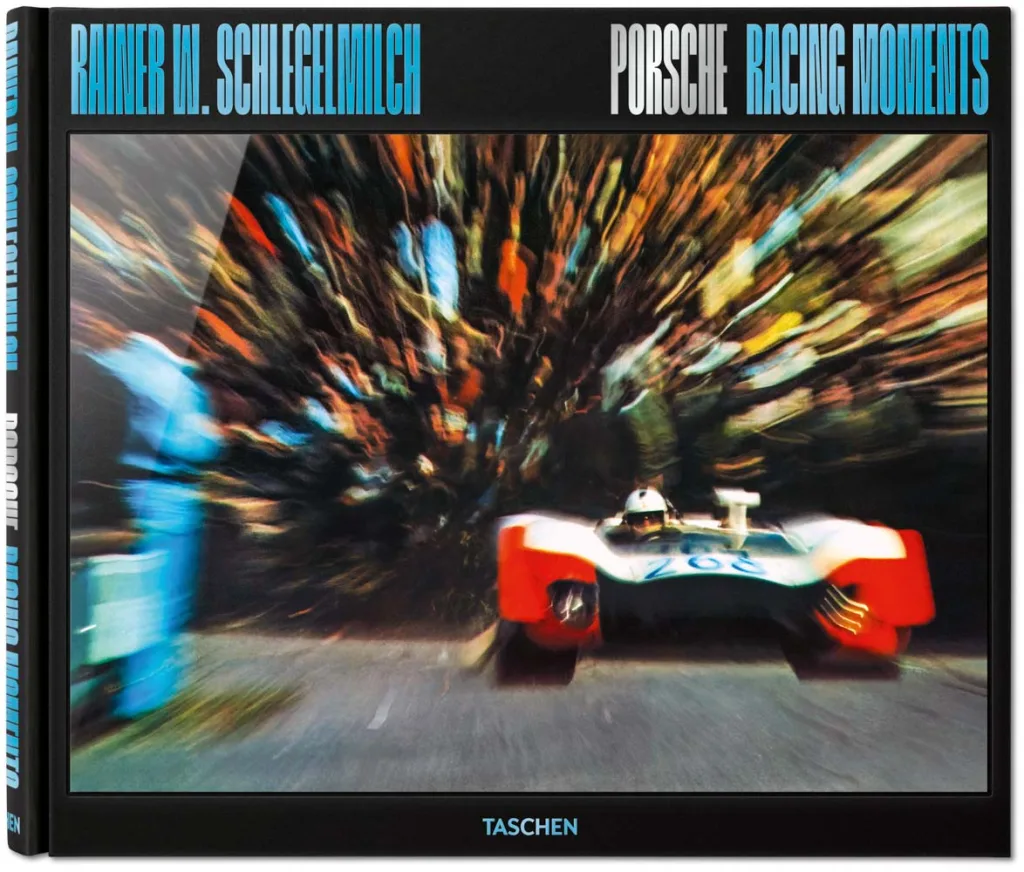
Edition of 762
Hardcover, 356 pages; aluminum print cover tipped into a leatherette-bound spine, foil embossing; 34.4 x 40.8 cm, 5.8 kg, with acrylic, engraved bookstand, € 850; taschen.com
That we are not talking about yet another Porsche book here should be clear from the moment you see the name Rainer W. Schlegelmilch. Indeed, we are talking about a legend in motorsport photography.
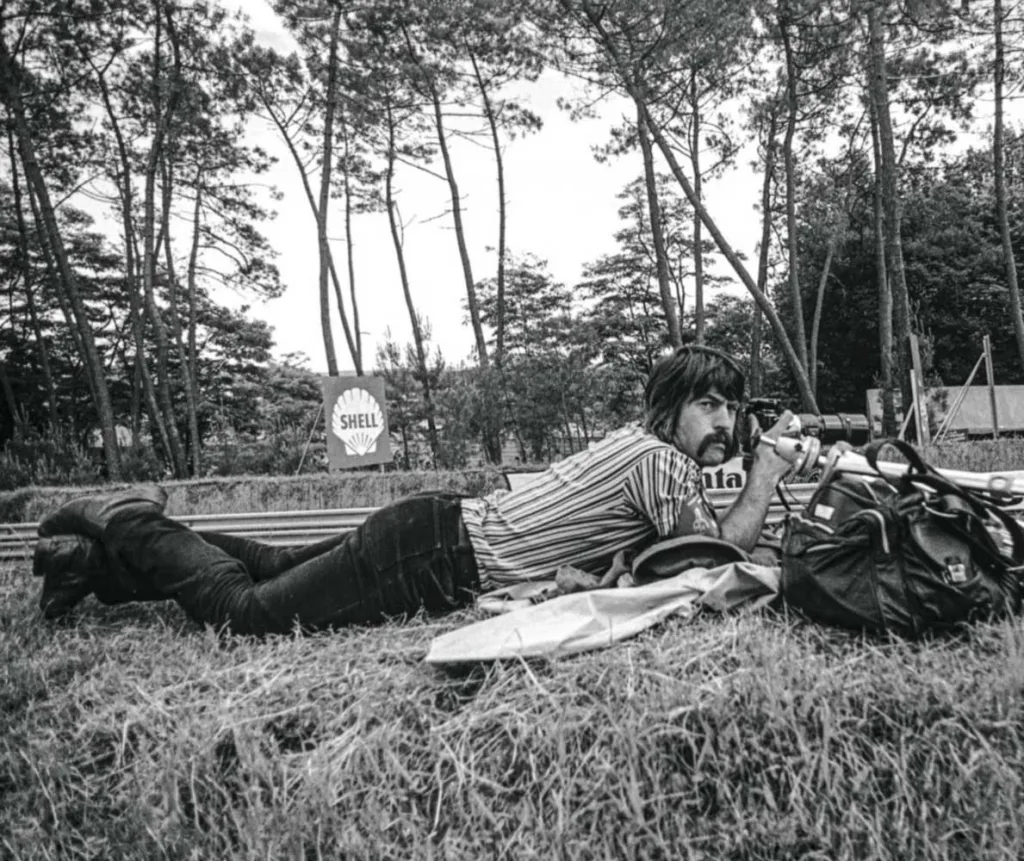
© Pete Biro / Revs Institute
The book “Life in the fastest lane” may be mainly about Porsche but Rainer photographed much wider than that. For instance, he has probably the largest motorsport photo collection in the world. This counts more than 600,000 images. Know that the vast majority of these were still taken with classic rolls of film.
The collection of images of Michael Schumacher alone counts more than 30,000 photos.
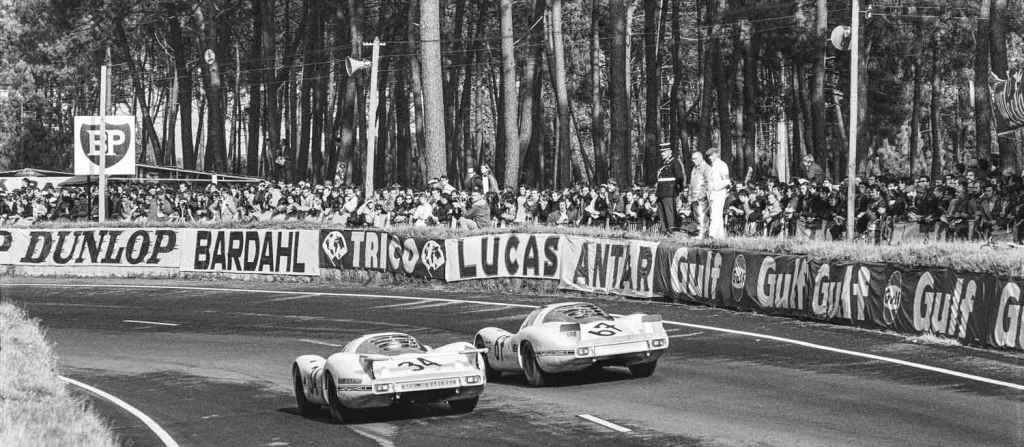
© Rainer Schlegelmilch / Motorsport Images
Rainer W. Schlegelmilch’s motorsport photo career started in 1962 during the 1000km at the Nürburgring. The passion for the Porsche brand started there too.
In the book it becomes clear where the passion for Porsche comes from. After all, Rainer was a Porschist himself. He talks about how he could enjoy driving from Frankfurt to the various motorsport events via numerous shortcuts. The distances never proved a problem, Le Mans, the 1000 km of Spa-Francorchamps and even the Targa Florio in Sicily he visited with his Porsche.
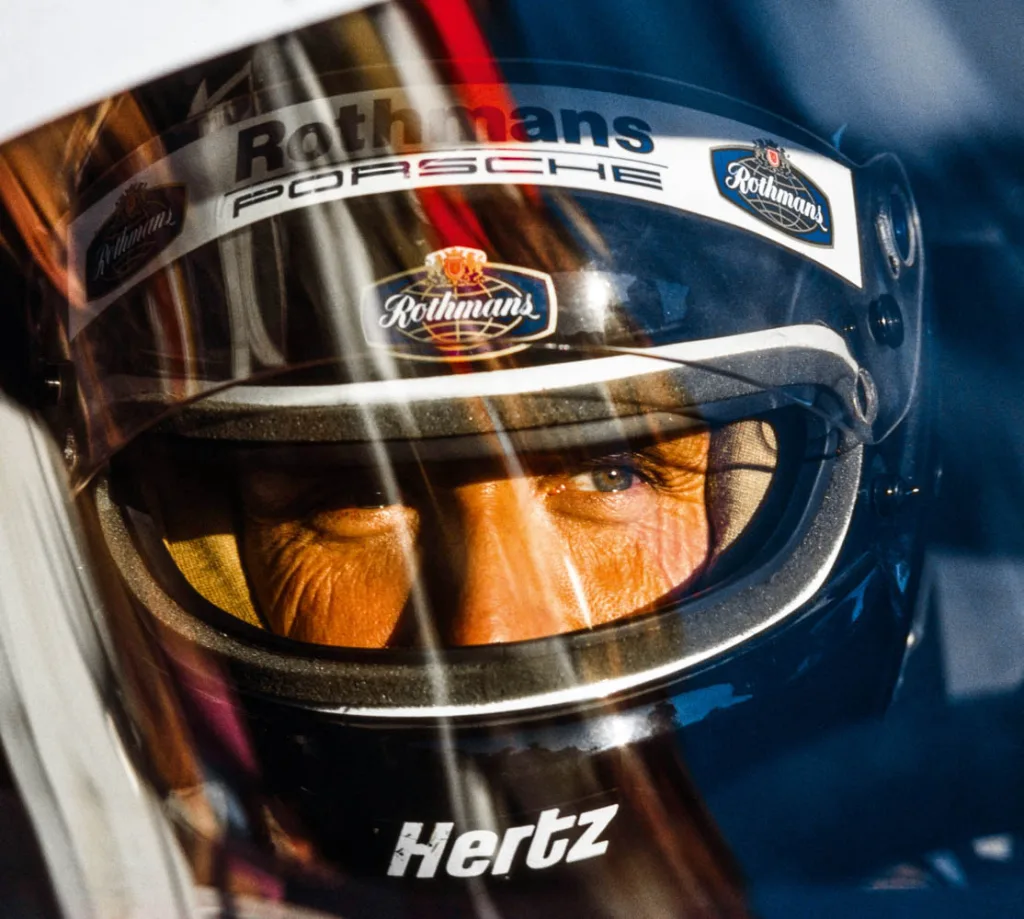
© Rainer Schlegelmilch / Motorsport Images
We at Wheels-and-things were lucky enough to have a short interview with Rainer. So we asked him some questions that we would like to share with you.
In the preface, I read how good the connection was with a large number of pilots at the time. So I asked him how he got those contacts, here his answer.
“In the good old days, you were closer to the drivers, they were not protected by PR and press managers. You also met them everywhere off the track and it was interesting for me to have a chat with them. Most of them, including engineers, etc, were interested in your work and camera equipment. The drivers had free time after practice, they enjoyed the hotel pools or beaches with us. And of course they were much more approachable after their race time when I met them in the paddock. Like Ickx, Stewart, Bell, Fittipaldi…”
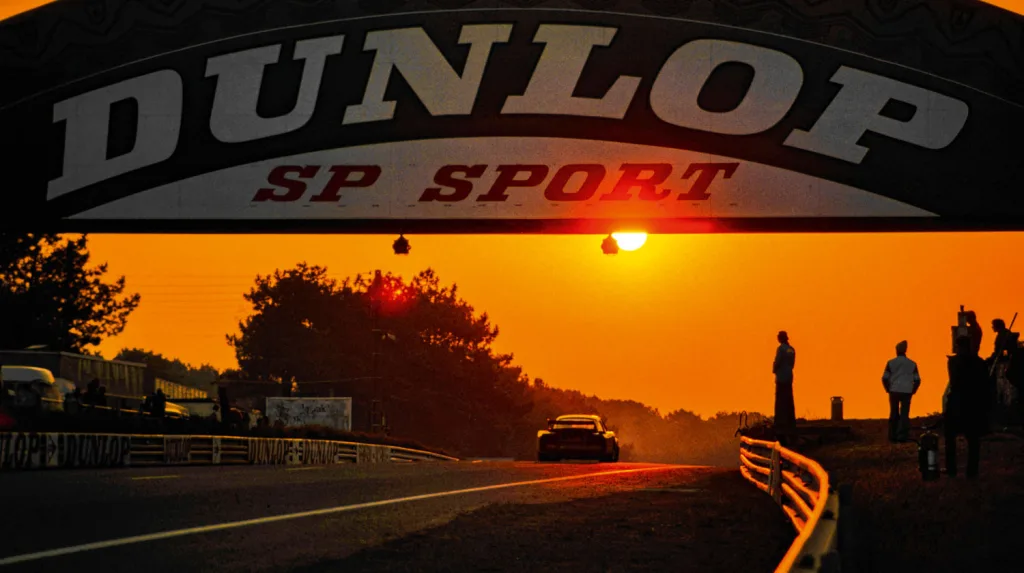
24 Hours of Le Mans, 1978
© Rainer Schlegelmilch / Motorsport Images
Numerous famous drivers appear at the beginning of the book. These include his good friend Jacky Ickx. They almost grew up in motorsport together. Jacky behind the wheel and Rainer lurking somewhere in the side to take the perfect photo.
This quote from Jacky Ickx actually says it all. “In this work about the Porsche Racing Moments he experienced during the big sports car races, I see his handwriting in breathtaking images that take us into his photographic imagination and his personal vision of what Porsche stands for in racing.”
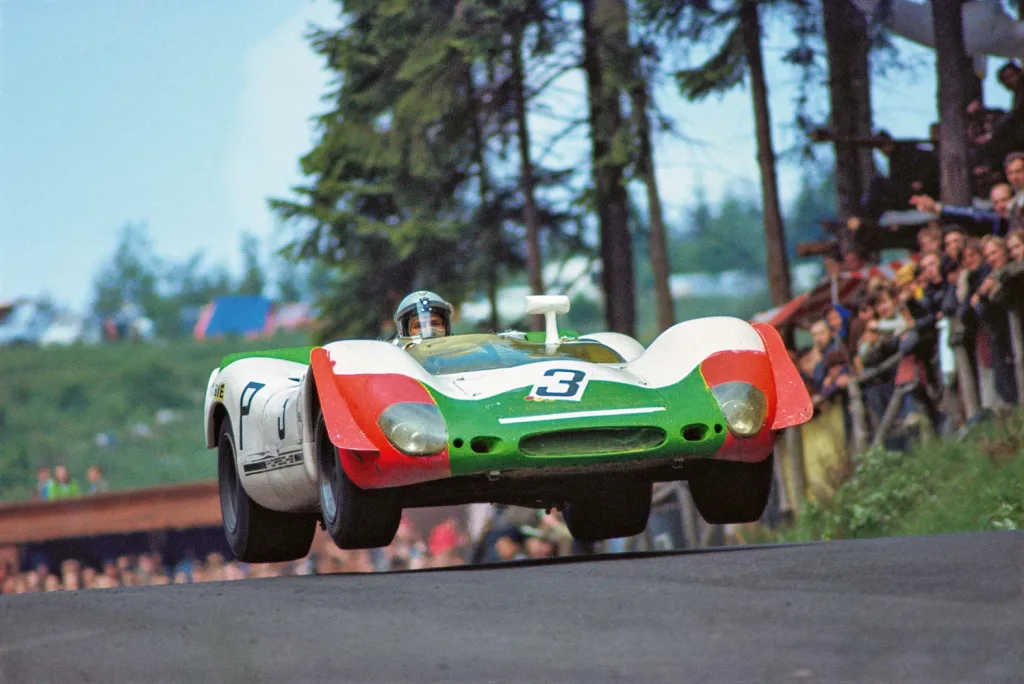
© Rainer Schlegelmilch / Motorsport Images
The collection of breathtaking photographs in this book starts in 1963 and takes you to another time and another world. They take you on a journey through the history of Porsche endurance racing, from Le Mans to Monza, via the Targa Florio and Spa-Francorchamps. And with his own words accompanying the photos, Schlegelmilch shows and tells fascinating stories from the racetrack.
During the period from 1962 to 1970, Rainer took pictures almost exclusively in black and white. From 1970 onwards, more colour photos were taken and from then on his photos appeared in magazines or on calendars. From 2004, Rainer also started photographing partly digitally.
When I asked Rainer about his favourite track, the following answer quickly came out
” For sports cars: Le Mans, 24 hours, sunrise, dramatic at night, hardest race. And for the
F1: Monaco, fantastic city circuit, cars closest to the camera, great backgrounds.”
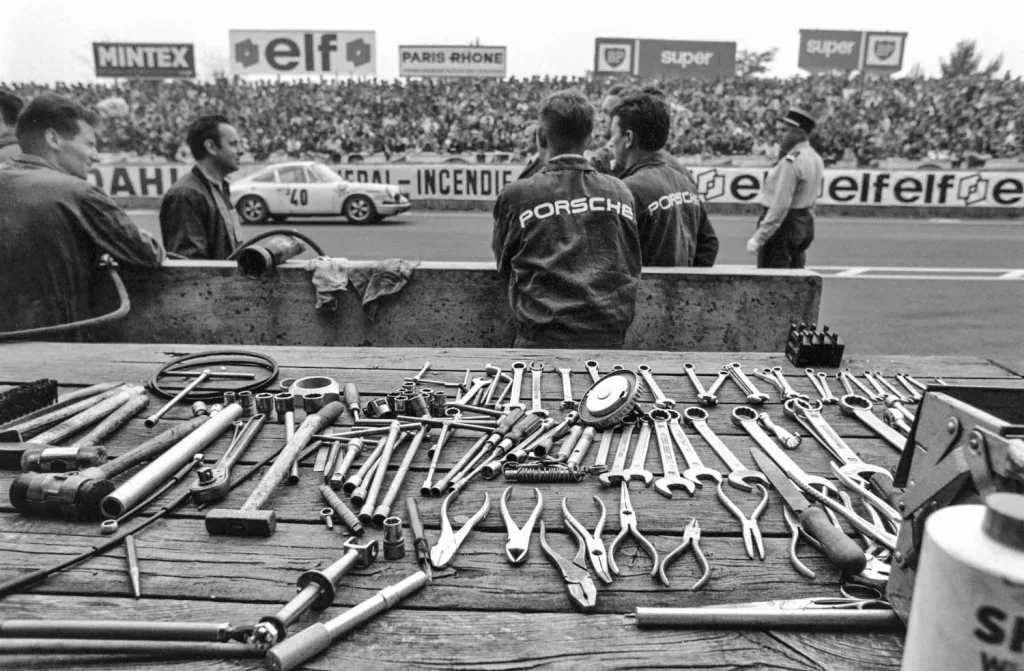
© Rainer Schlegelmilch / Motorsport Images
Obviously the cars are the heroes of the book but it is also fascinating the way Rainer portrays the people around and in the cars. If you look at photos showing mechanics, you can almost smell the oil on their hands.
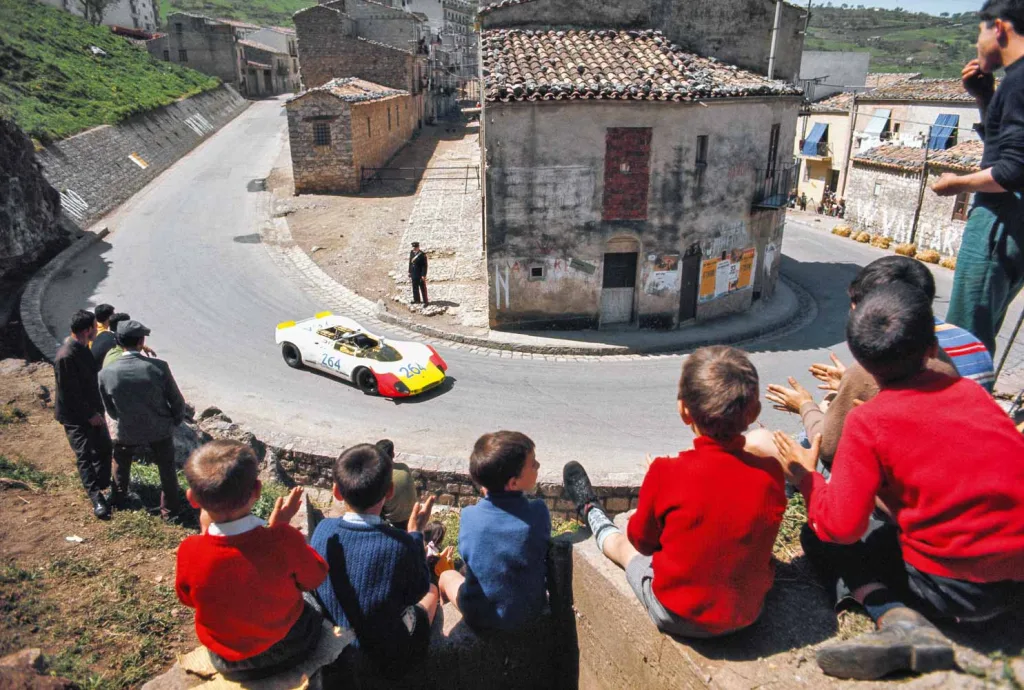
© Rainer Schlegelmilch / Motorsport Images
The picture above showing a Porsche 908/2 during the Targa Florio as it raced through Collesano and was encouraged by the children of the village is another fantastic image. Photos like this also typify Rainer, he shows the interaction between the race and the spectators. You come across these kinds of images regularly in the book and thus make it extra fascinating for me. By the way, if you ever come near Collesano, be sure to visit the Museo Targa Florio. It turns out to be more than worth it.
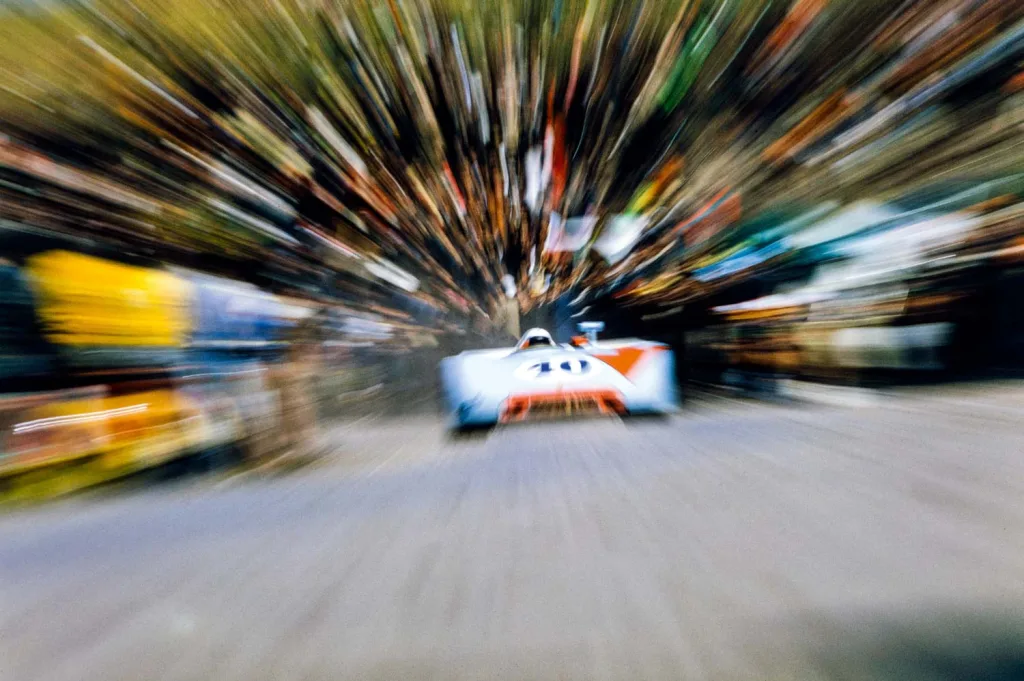
© Rainer Schlegelmilch / Motorsport Images
The very specific zoom technique used by Schlegelmilchs also called motion shots comes up regularly in the book. It is probably this technique that brought Rainer W. Schlegelmilch the most fame. You are really drawn into the photo, as it were, and the speed and energy really burst out of it.
Naturally, I asked Rainer how he came to this technique; he tells you himself.
” In 1969, I bought my first zoom lens with a Nikon. I had the idea of using it to show the speed of a moving racing car.
At the Targa Florio that year, I put the camera with the zoom on a tripod and went to a corner of the circuit with people behind it on a hill.
I found myself in the corner outside in the ditch along the road. When a car came into view in the middle straight towards me, I pressed the shutter button with a long exposure time and at the same time opened the zoom with my left hand. Result: the car was almost in focus, moving in front of me and the background with the people was like an explosion of colours. That was my technique in racing photography, especially in F1 for the next 50 years!”
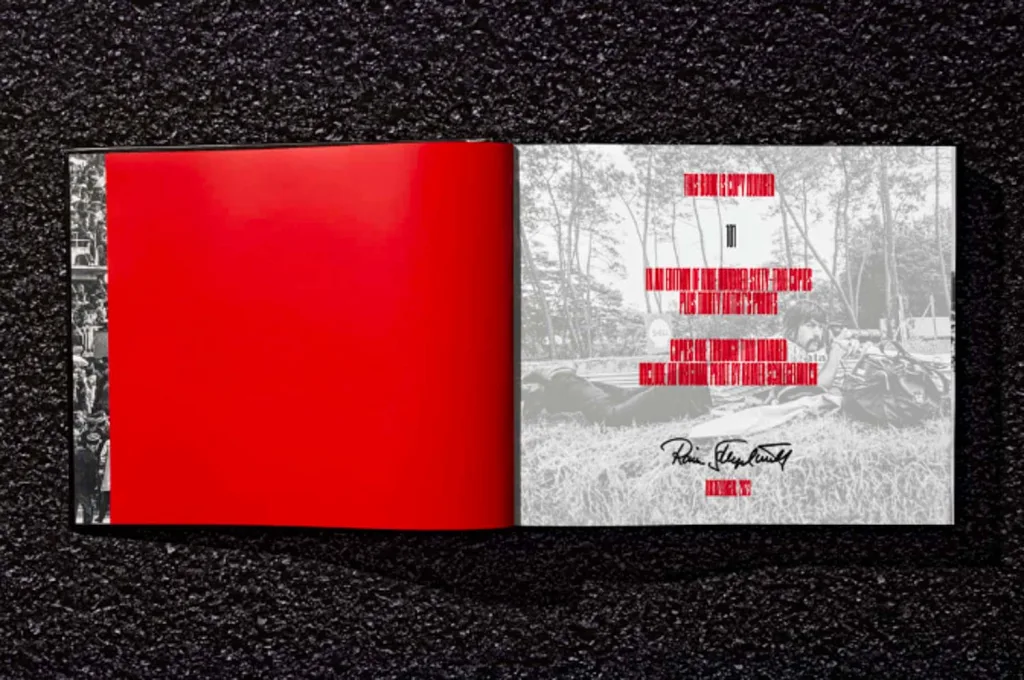
The book contains photographs covering a period from 1963 to 1988 and has 356 pages. The print run is very limited and, at the time of writing, the first 200 ‘special editions’ are already sold out.
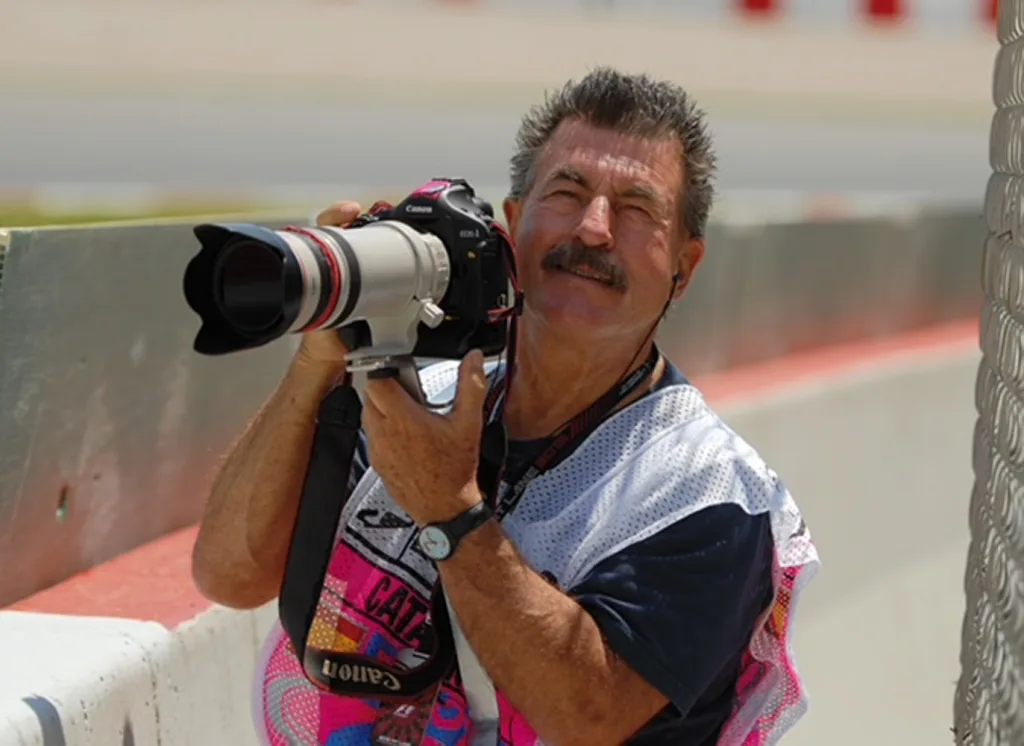
The picture above shows Rainer W. Schlegelmilch in full action six years ago.
I myself enjoyed the book as well as the interview with Rainer W. Schlegelmilch and I can only fully recommend the book!
The book comes with an acrylic engraved book stand and weighs 5.8 kgr and has 356 pages.
The photos in this article are provided by Taschen.
Available to order from publisher Taschen under ISBN No 978-3-8365-9461-5
Visit the Taschen Website
Visit the Rainer W. Schlegelmilch Website
